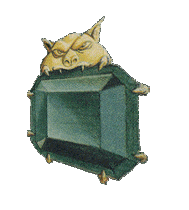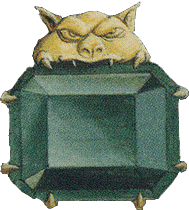
The Coming Dark
Seattle-Tacoma Area Old School Magic Summer 2020 Meetup
Rules Publication Date: February 19, 2020
June 5, 4PM-11PM
Location: Optimism Brewing
1158 Broadway, Seattle, WA 98122
Want a quick event overview? Check out the Cliff's Notes video.
Table of Contents
1. Lore
2. Event Summary: Basic Logistics
2.1 Two Major "Zones" for Play
2.2 The Winner of Each Table Gets a Reward
2.3 Play At Tables of Up to Four
2.4 Play Culminates in a Top 4 Bracket
2.5 Round Structure
2.6 Match Structure
2.7 Oh, And Random Monsters Are Everywhere!
3. Deckbuilding & Flavor Guidelines
3.1 Deck Tier
3.2 Your "Dark Seed"
3.3 Best Dark Seed Always Chooses Play/Draw
4. Zones, Locations, Corners, and Prizes
4.1 The Two Zones: "The City" and "The Wilds"
4.2 Tables are Called "Locations"
4.3 "Flavorful" Tournament Layout
4.4 Rewards for Winning: "Prizes"
5. The Top 4
5.1 Most Noble Supporters: "The Mayor, Hero of The City"
5.2 Most Dark Powers: "The Beast, Terror of The Wilds"
5.3 Most Prizes Won: "Conquerors of Sorrow's Path"
6. Round Structure Details
6.1 Players Choose Zones
6.2 Prizes for Each Location Are Revealed
6.3 Players Choose Locations
6.4 Play Matches
6.5 Round Time Limits
7. Match Structure Details
7.1 Single Player at a Location: Auto-Win Tier 1
7.2 Two Players at a Location: Best 2-of-3
7.3 Three Players at a Location: Mini-Bracket with Bye
7.4 Four Players at a Location: Mini-Bracket
7.5 Zero Players at a Location: Leave Prizes There
8. Prizes
8.1 Noble Supporters: Details and Effects
8.2 Dark Powers: Details and Effects
8.3 Prize Allocation & Tables
9. Random Monsters
9.1 Random Monster Appearance & Behavior
9.2 "Unsubdued" and "Subdued" Random Monsters
9.3 Unsubdued Random Monster Behavior
9.4 Subdued Random Monster Behavior
9.5 Blocking Random Monsters
10. Top 4 Bracket
11. Errata
Appendix A: Noble Supporter Table
Appendix B: Dark Power Table
Appendix C: Random Monster Table
1. Lore
The fierce and deadly Brothers' War ended in cataclysm. Seeing no way to prevent his brother Mishra from irrevocably tearing open the Gates of Phyrexia, Urza was forced to detonate the Golgothian Sylex. This terrible weapon did thwart Mishra's plans, but in the process destroyed not only both armies but also the island of Argoth itself, sending out a shockwave felt throughout Terisiare. Urza's "victory," if one can call it that, came at a terrible long-term cost as well: the Sylex's explosion threw massive quantities of dust into the air, darkening the skies and cooling the planet.
Slowly but surely, the climate of Terisiare and even all of Dominaria began to change. Summer grew shorter, and winter longer. Crops failed. Forests withered. Animals perished or retreated deeper into the wild, searching for sustenance. And the people of Terisiare, too, began to change. A powerful anti-magic cult gained followers, blaming all who practice magic for the troubles of the world. Others retreated into the wilds themselves, choosing to rely on their own skills and willpower to survive. Some scant few even chose a more sinister path, embracing the growing darkness and seeking to direct it toward their own ends.
Much of what happened in these gloomy days was lost to the murk that followed. We know that many men and women of power scoured both the unruly Cities and the dangerous Wilds searching for resources, yet in most cases neither they nor their efforts were recorded well enough to survive into modern times.
But to this day, one tale is known above all others, concerning a legendary figure, a mage of great power who managed to best their rivals and overcome the perils of the age to rule over Terisiare, shaping the course of history according to their own ideals. The story of their rise to power is a tale of the acquisition and marshalling of the scant resources available, each victory providing a tiny but critical edge that let them further consolidate power.
The telling of this great tale is far less exciting, however, than actually reliving it...
2. Event Summary: Basic Logistics
The Coming Dark is a tournament with six primary "Rounds" culminating in a final Top 4 playoff. Players who win a Round win a reward, which has a beneficial gameplay benefit for future Rounds.
2.1 Two Major "Zones" for Play
The primary tournament has no brackets, nor a Swiss-style match-making procedure. Instead, the tournament room is divided into two groups of tables, with each group of tables called a "Zone." As the first step in each Round, players select the Zone they wish to play in for the Round. Players determine their own matchups within each Zone per the rules in Section 2.3.
Players may switch Zones any time between Rounds, but not during a Round. Each Zone has slightly different rules (see Section 9.1) and reward structures (see Section 8).
2.2 The Winner of Each Table Gets a Reward
Every Round, each table is assigned a unique, random reward that the winner of that table that Round earns. Rewards provide gameplay bonuses in future Rounds (see Section 8).
2.3 Play At Tables of Up to Four
After players have chosen a Zone for the Round and rewards for each table are revealed, players choose a table to sit at. Players whose decks best represent the flavor of the event have the advantage of choosing which rewards to compete for first (see Section 3.2 and Section 6.3).
Players will play against the other players who sit at the same table as them that Round, with the winner earning the reward(s) at that table. The structure of that competition is shown in Section 2.6.
Here's a picture showing the physical setup of the tournament:
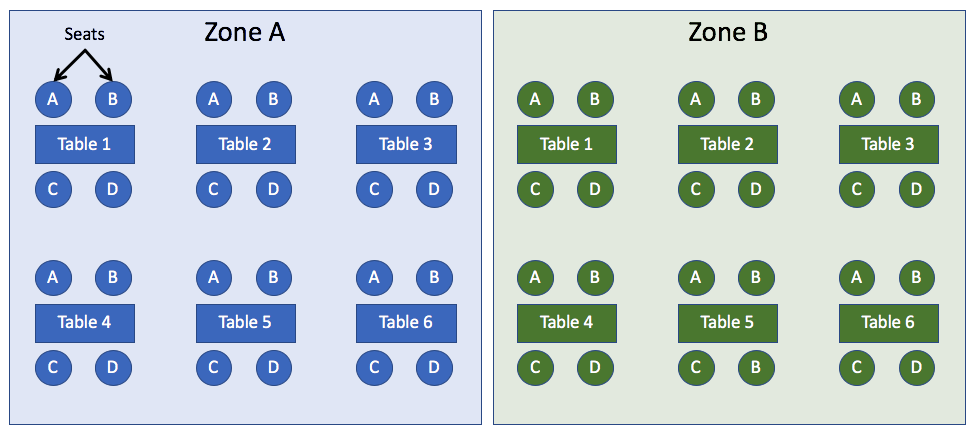
Because the rewards at each table are different, some tables will have more desirable rewards than others. Thus, players will more flavorful decks will have first choice at which rewards to compete for.
Each table can seat up to four players. Some tables may have fewer players (or even zero) depending on how players choose to sit. If a table has no players during a Round, its reward is left in place as a bonus reward for the next Round.
2.4 Play Culminates in a Top 4 Bracket
The four players who achieve the following results advance to the Top 4 playoff to determine the winner of the tournament:
- Each player who wins the greatest rewards from each respective Zone
- The two players who win the most combined rewards from either Zone (excluding the two players from [1])
The semifinals of the Top 4 are decided using best-2-of-3 games, and the finals use best-3-of-5.
2.5 Round Structure
Here is a summary of the steps in a Round:
|
Round Step |
Action |
More Details |
|
1 |
Players Choose Zones |
|
|
2 |
Rewards for Each Location Revealed |
|
|
3 |
Players Choose Tables |
|
|
4 |
Play Matches |
2.6 Match Structure
How a "Match" proceeds at a given table depends on the number of players at that table, as shown below (note: "Tier" and "Dark Seed" refer to flavorful-ness criteria described in Section 3).
|
Seats Filled |
Summary |
Picture |
|
1 |
Player automatically wins Tier 1 Prize (unless they are Tier 0) |
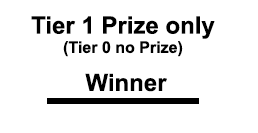 |
|
2 |
Best-of-three Match |
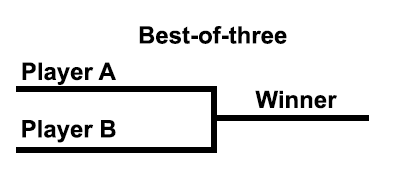 |
|
3 |
Two worst Dark Seeds semifinal game, then vs. best Dark Seed final game |
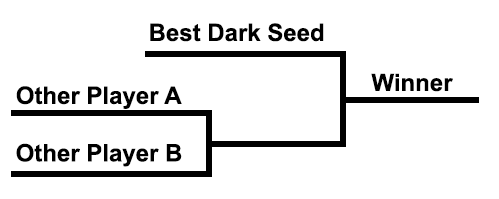 |
|
4 |
Best Dark seed vs. their choice semifinal game + other two semifinal game, then final game |
 |
|
0 |
Prize remains at table for next Round |
2.7 Oh, And Random Monsters Are Everywhere!
Additionally, because the world itself has become dangerous, "Random Monsters" (creatures from The Dark) may appear at the start of any player's turn. Left to their own devices, these creatures have a mind of their own and seek to kill all players. They are fully explained in Section 9.
3. Deckbuilding & Flavor Guidelines
Players construct decks containing 60 or more cards. No sideboards allowed. Divine Intervention is banned. Otherwise, normal PAC deck construction rules apply.
For brevity, we will often say "The Dark cards" to refer to on-flavor cards instead of "cards originally printed in The Dark." However, any PAC-legal card originally printed in The Dark counts as a "The Dark card" for flavor purposes, such as Chronicles or Fourth Edition reprints.
3.1 Deck Tier
Player's decks are assigned a "Tier" based on the number of The Dark cards they include in their deck. Tiers are defined as follows:
|
Card Count |
Deck Tier |
|
|
Tier 0 |
|
|
Tier 1 |
|
|
Tier 2 |
|
|
Tier 3 |
3.2 Your "Dark Seed"
Each player is assigned a "Dark Seed." Their Dark Seed is their ranking (1 being the best) of the most The Dark cards in their deck out of all decks in the tournament. If two players are tied with the same number of The Dark cards, the tie is broken in this order:
- First, by number of unique The Dark cards, e.g., whether you have 1 or 4 copies of Maze of Ith, that counts as 1 unique The Dark card
- Then, by fewest Restricted cards
- Then, by fewest total copies of Strip Mine and Maze of Ith
- Then, by Chaos Orb flips
A player's Dark Seed is used to provide priority to certain choices during the tournament. It is also represented by a custom altered card.
3.3 Best Dark Seed Always Chooses Play/Draw
Among other benefits, the player with the best Dark Seed in a game always gets to choose whether to play first or draw at the start of every game - not Match. That is, if the player with the best Dark Seed wins a game in a best-of-three Match, they may also choose to play or draw in the game immediately following that.
4. Zones, Locations, Corners, and Prizes
4.1 The Two Zones: "The City" and "The Wilds"
The two Zones are named "The City" and "The Wilds."
4.2 Tables are Called "Locations"
The tables in each Zone are called "Locations." Seats at the tables are called "Corners," and each Location has four Corners.The Locations are named as follows:
|
The City |
|
|
The Barracks |
The Warehouse |
|
The Church |
The Alley |
|
The Ale Hall |
The Cemetery |
|
The Wilds |
|
|
The Bog |
The Firelands |
|
The Woods |
The Mists |
|
The Caves |
The Wasteland |
Note: We can easily adjust the number of Locations up or down to make a good variety of player counts at each Location more likely, depending on expected turnout. The layout shown here supports a max of 48 players, though fewer would likely be better so not every Location has all 4 Corners filled.
4.3 "Flavorful" Tournament Layout
If we recast the diagram of the tournament's physical layout in flavorful terms, here's what it looks like:
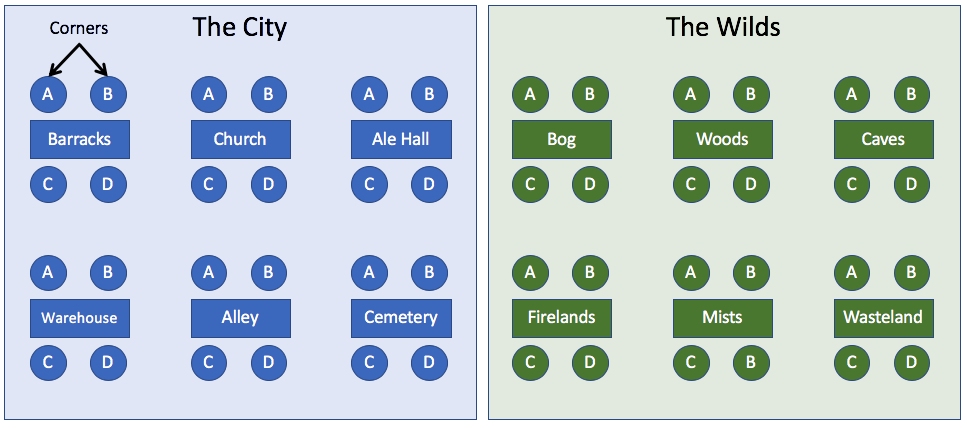
4.4 Rewards for Winning: "Prizes"
Rewards for winning a Match are called "Prizes." The Prizes a player can win during a Match vary depending on whether the player is in The City or The Wilds.
Duels which take place in The City award "Noble Supporters", whose resources and influence make that player better able to withstand the pain of The Coming Dark, as well as give them greater access to their own magical abilities (see Section 8.1).
Duels which take place in The Wilds award "Dark Powers", which let them take advantage of the evils of The Coming Dark and use them towards their own ends (see Section 8.2).
5. The Top 4
At the conclusion of the main 6 Rounds of the tournament, 4 players will advance to a final Top 4 Bracket based on the Prizes they acquired during the Rounds.
5.1 Most Noble Supporters: "The Mayor, Hero of The City"
The player with the most Noble Supporters at the end of the 6 Rounds is named "The Mayor, Hero of The City." In the event of a tie for The Mayor, the player with the best Dark Seed wins.
5.2 Most Dark Powers: "The Beast, Terror of The Wilds"
The player with the most Dark Powers at the end of the 6 Rounds is named "The Beast, Terror of The Wilds." In the event of a tie for The Beast, the player with the best Dark Seed wins.
5.3 Most Prizes Won: "Conquerors of Sorrow's Path"
Additionally, the two players besides The Mayor and The Beast with the most total Prize cards, in any combination, advance to the Top Four via "Sorrow's Path" and are named "Conquerors of Sorrow's Path." In the event of a tie for a Conqueror position, the player with the best Dark Seed wins.
Note that Noble Supporter CARDS - not actual Noble Supporters - are what matter from The City for purposes of Sorrow's Path (in addition to Dark Power cards earned in The Wilds).
6. Round Structure Details
In more detail, here are the steps of each Round.
6.1 Players Choose Zones
Players choose the Zone (The City or The Wilds) in which they wish to compete in search of Prizes. Once players have chosen a Zone, they may not change Zones (by choice) until the next Round.
6.2 Prizes for Each Location Are Revealed
The tournament organizer randomly determines which prizes appear at each Location in each Zone (see Section 8.3).
6.3 Players Choose Locations
Starting with the player with the highest Dark Seed, players in each Zone choose a Corner to sit at. If a Location has no available Corners, it is full, and no other player may sit at that Location that Round.
If all Locations in a Zone are full, the tournament organizer will require all remaining players to switch to the other Zone, choosing their Corners only after all players already in that Zone have completed choosing Corners, even if the players who are forced to move have better Dark Seeds. This is the ONLY mechanism by which a player can change Zones during a Round.
6.4 Play Matches
Players at each Location play their Match as described in Section 2.6, with the winner claiming the Prize.
6.5 Round Time Limits
Rounds are limited to 50 minutes. Any turns in a game which begin after the 50 minute mark in the Round are modified as follows:
- Random Monsters automatically spawn every turn (see Section 9)
-
Players may not cast any spells at sorcery speed, nor make any decisions
except:
- Casting spells or using effects that can be used at instant speed
- Making choices for effects and decisions as required by cast spells, or activated or triggered abilities
- Choosing attacking and blocking (both their own creatures and Random Monsters)
- Discarding cards if they are required to during the cleanup step of their turn
Play continues until the game (and any subgames) are complete. No new games may begin after 50 minutes in the Round.
If total time in the Round reaches 65 minutes, or gameplay concludes without a player winning the Match, then the player with the best Dark Seed wins the Match.
7. Match Structure Details
How a given Match proceeds at a Location depends on the number of players at that Location.
7.1 Single Player at a Location: Auto-Win Tier 1
If a Location has a single player, that player wins the Prize from that Location immediately. However, they are only eligible to receive the Tier 1 Prize(s) from that Location (Tier 0 decks still do not earn a Prize).
7.2 Two Players at a Location: Best 2-of-3
If a Location has two players, those players play a standard best-of-three Match. Remember that the player with the best Dark Seed always chooses play or draw, and sideboards are not used at this event.
7.3 Three Players at a Location: Mini-Bracket with Bye
If a Location has three players, the two players with the worst Dark Seeds face each other in a single game. The winner of this game plays the player with the best Dark Seed in a final game of the Round to determine Match winner.
If the two players with the worst Dark Seeds are still playing their game at the 25 minute mark, that game immediately proceeds in the same manner as Rounds which hit the 50 minute mark, and if the game reaches the 30 minute mark, the player with the better Dark Seed automatically wins that game.
7.4 Four Players at a Location: Mini-Bracket
If a Location has four players, the player with the best Dark Seed chooses another player to be their "Initial Opponent." The other two players become each other's Initial Opponents. Both sets of Initial Opponents face each other in a single game. The winners of these two games play each other in the final game of the Round to determine the Match winner.
If two Initial Opponents are still playing their game at the 25 minute mark, that game immediately proceeds in the same manner as Rounds which hit the 50 minute mark, and the player with the better Dark Seed automatically wins if the game reaches the 30 minute mark. The losers of these two initial games may play a final game, but no Prizes or other rewards are on the line -- it's just for glory.
7.5 Zero Players at a Location: Leave Prizes There
If a Location has zero players, its Prizes are left in place. An additional Prize will be added to that Location in the next Round as normal.
8. Prizes
Players who win Matches earn Prizes that make them more powerful for future duels. Matches in The City award Noble Supporters, and Matches in The Wilds award Dark Powers.
8.1 Noble Supporters: Details and Effects
Each Noble Supporter a player earns provides that player one extra life at the start of every Game they play.
Additionally, for every 4 Noble Supporters a player has, before the first turn of every game, they may exile the top card of their deck face down (or face up if they choose), and they may play cards exiled in this way as if they were in their hand. Players exile cards one at a time and may choose to stop exiling cards even if they are allowed to exile more cards. Players must make all mulligan decisions prior to using this ability.
Noble Supporters are tracked via special altered cards, and players who win Noble Supporters may keep the cards as trophies.
8.2 Dark Powers: Details and Effects
Each Dark Power a player earns is a new spell from The Dark they gain access to use.
At the start of every game, all of a player's Dark Powers begin in that player's exile zone face down (a player may also begin with any of their Dark Powers face up if they so choose). A player may cast each Dark Power spell from exile once per game, using their mana to pay its casting cost as if the mana were of any color (e.g., they just pay its CMC in any combination of mana). A player may have multiple copies of the same spell as a Dark Power if they won multiple copies as Prizes.
Dark Powers are represented via special altered cards, and players who win Dark Powers may keep the cards as trophies.
8.3 Prize Allocation & Tables
Prizes are determined randomly each Round by rolling a d20 for each Location. The higher a player's Tier, the greater the Prize they are eligible for. See Appendix A: Noble Supporter Table and Appendix B: Dark Power Table for a detailed description of the Prizes.
9. Random Monsters
The world is not safe, and the other mages competing for resources are not the only danger!
9.1 Random Monster Appearance & Behavior
Starting on turn 3, at the start of each player's upkeep, there is a chance a Random Monster (from The Dark) will appear! In The City, a Random Monster appears with a roll of 1 on a d8. In The Wilds, a Random Monster appears with a roll of a 1 on a d6. If a Random Monster appears, a d20 roll plus the table in Appendix C: Random Monster Table is used to determine which Random Monster appears.
9.2 "Unsubdued" and "Subdued" Random Monsters
Random monsters enter the battlefield in an "Unsubdued" state. Random Monsters may be "Subdued" by effects like Control Magic or Preacher -- any effect which states it gives a player control over an appropriate permanent type. Additionally, once per turn on their turn, a player may cast a copy of this special spell, which is not represented by a card:
Subdue Random Monster
{2}
Sorcery
As an additional cost to cast Subdue Random Monster, roll a d6. If the d6 roll is
less than or equal to your deck's Tier, gain control of target Unsubdued Random
Monster.
Note: the d6 roll being made part of the casting cost of this spell means that an opponent may wait to use a counterspell until AFTER they know what the d6 roll will be, among other consequences. Also note that this spell is colorless.
Random Monsters are considered on the Battlefield and may be targeted by instants, sorceries, enchantments, or any other spell which can target an appropriate type of permanent on the battlefield.
All Random Monsters have haste, whether Subdued or Unsubdued.
If a Random Monster would leave the Battlefield for any reason, it is exiled instead.
If a player kills a Random Monster, they may keep the Random Monster card as a trophy. Random Monster cards will be sweet alters.
Random Monsters observe all other rules and restrictions in their Gatherer text except as noted elsewhere.
9.3 Unsubdued Random Monster Behavior
Unsubdued Random Monsters untap during every untap phase, and because all Random Monsters have haste, they can attack the turn they come into play. Unsubdued Random Monsters attack the active player's opponent in each attack phase if able.
A player may use the abilities of an Unsubdued Random Monster during their turn (e.g., they can use Rag Man or Banshee). They must use mana of the appropriate type and comply with any other requirements to do so.
Unsubdued Random Monster abilities which reference their controller (e.g., "you" or "your") always refer to the active player. Similarly, Unsubdued Random Monster abilities which reference opponents (e.g., "they" or "their") refer to the opponent of the active player.
If an Unsubdued Random Monster would leave play for any reason, it is considered not to have had a controller when it does so (e.g., if you cast Swords to Plowshares on an Unsubdued Random Monster, no player gains life).
9.4 Subdued Random Monster Behavior
Subdued Random Monsters are treated exactly like ordinary creatures controlled by the player who Subdued them. Recall that all Random Monsters have haste.
Should a Subduing effect cease, the affected creature returns to being a normal Unsubdued Random Monster immediately.
Subdued Random Monsters are controlled by their controller (e.g., if you cast Swords to Plowshares on a Subdued Random Monster, its controller gains life).
9.5 Subdued Random Monster Behavior
Players may block attacking Random Monsters (Subdued or Unsubdued) following normal rules as if their opponent were attacking with them.
If a player uses a creature originally printed in The Dark to block a Random Monster (Subdued or Unsubdued), the player may give that blocking creature +2/+0, +1/+1, +0/+2, banding, reach, or first strike. No blocking creature may receive more than one such bonus during a given turn. NOTE: the intent of reach being in this rule is to allow non-flying The Dark creatures to block flying Random Monsters
10. Top 4 Bracket
Once The Mayor, The Beast, and the two Conquerors have been named, they face each other in a final playoff bracket. The semifinals of the bracket are won based on best-2-of-3 games, and the finals are won based on best 3-of-5 games.
The Mayor and The Beast begin the Top 4 on opposite sides of the bracket. The better Dark Seed between The Mayor and The Beast may choose the Conqueror they wish to face in the semifinal round.
Random Monsters can appear as normal during the Top 4, using a d8 to determine whether they appear every upkeep starting with the third turn.
The player who wins the Top 4 bracket is declared the winner of The Coming Dark, styled as Glorious Hero or Sinister Tyrant (their choice), with the future of Terisiare left in their in their hands!
11. Errata
Preacher
You may choose not to untap Preacher during your untap step.
{T}: Choose one:
- For as long as Preacher remains tapped, gain control of target Unsubdued Random Monster.
- For as long as Preacher remains tapped, gain control of target creature of an opponent's choice they control.
Ring of Ma'ruf
5, {T}, Exile Ring of Ma'ruf: The next time you would draw a card this turn, instead choose a card you own from exile or from your sideboard, or choose and reveal an exiled Random Monster, and put it into your hand. A Random Monster brought into a Player's hand by Ring of Ma'ruf may be cast using mana of any color.
Divine Intervention
BANNED
Appendix A: Noble Supporter Table
Noble Supporter cards indicate the number of lords, ladies, and other dignitaries who support a player's efforts to secure the city from harm. They are randomly assigned to all Locations in The City each Round as shown in the table below:
|
d20 Roll |
Tier 0 |
Tier 1 |
Tier 2 |
Tier 3 |
|
1-6 |
0 |
1 |
2 |
3 |
|
7-12 |
0 |
2 |
3 |
4 |
|
13-17 |
0 |
3 |
4 |
5 |
|
18-19 |
0 |
4 |
5 |
6 |
|
20 |
0 |
5 |
7 |
10 |
Appendix B: Dark Power Table
Dark Power cards are randomly added to each Location in The Wilds each Round as shown in the table below. Note that several cards have event-specific errata, as indicated below the table.
|
d20 Roll |
Tier 0 |
Tier 1 |
Tier 2 |
Tier 3 |
|
1-2 |
None |
Morale |
Cleansing |
Ashes to Ashes |
|
3-4 |
None |
Festival |
Stone Calendar |
Dance of Many* |
|
5-6 |
None |
Dark Sphere |
Worms of the Earth |
Blood Moon** |
|
7-8 |
None |
Marsh Gas |
Safe Haven |
Maze of Ith |
|
9-10 |
None |
Fountain of Youth |
Tormod's Crypt |
Fissure |
|
11-12 |
None |
Word of Binding |
Barl's Cage |
Dust to Dust |
|
13-14 |
None |
Runesword |
Flood*** |
Dark Heart of the Wood**** |
|
15-16 |
None |
Brainwash |
Season of the Witch |
Inferno |
|
17-18 |
None |
Living Armor |
Wand of Ith |
Venom |
|
19-20 |
None |
Fire and Brimstone |
Mind Bomb |
Amnesia |
* - A Dark Power Dance of Many's upkeep cost may be paid with mana as if it were
mana of any color (e.g., its upkeep cost is {2})
** - A player may choose to play a Dark Power Blood Moon "hacked" to change
"Mountains" into a single basic land type among basic land types they control
instead (they may only play it under its normal Gatherer text if they control no
basic land types; also note that a player who controls a Bayou controls both the
"Swamp" and "Forest" basic land types, for example)
*** - A Flood's ability may be paid with mana as if it were mana of any color
(e.g., its cost is {2})
**** - A player may choose to play a Dark Power Dark Heart of the Wood "hacked"
to change "Forests" into a single basic land type among basic land types they
control (they may only play it under its normal Gatherer text if they control no
basic land types; also note that a player who controls a Bayou controls both the
"Swamp" and "Forest" basic land types, for example)
Appendix C: Random Monster Table
When a Random Monster appears, roll a d20 to determine which monster appears. Additions or modifications to the rules text of a Random Monster are as shown in the Notes field.
|
d20 Roll |
Random Monster |
Notes |
|
1 |
Angry Mob |
|
|
2 |
Banshee |
|
|
3 |
Bog Imp |
|
|
4 |
Cave People |
|
|
5 |
Diabolic Machine |
If it is Unsubdued, any player may pay mana to regenerate Diabolic Machine. |
|
6 |
Eater of the Dead |
|
|
7 |
Electric Eel |
The active player is dealt 1 damage when Electric Eel comes into play. A player who Subdues Electric Eel also takes 1 damage when they Subdue Electric Eel. |
|
8 |
Fire Drake |
|
|
9 |
Frankenstein's Monster |
When Frankenstein's Monster enters the battlefield,
starting with the active player, each player exiles X creature
cards from their graveyard. For each creature card exiled that
player exiles in this way plus one, that player places a
+2/+0, +1/+1, or +0/+2 counter on it. |
|
10 |
Ghost Ship |
If it is Unsubdued, any player may pay mana to regenerate Ghost Ship. Mana may be used as if it were mana of any color to pay this cost (i.e., its regeneration cost is {3} while it is Unsubdued). |
|
11 |
Goblin Hero |
|
|
12 |
Land Leeches |
|
|
13 |
Leviathan |
If it is Unsubdued, Leviathan untaps normally during any untap phase and attacks without any player sacrificing Islands. |
|
14 |
Marsh Vipers |
|
|
15 |
Murk Dwellers |
|
|
16 |
Rag Man |
|
|
17 |
Spitting Slug |
If it is Unsubdued, any player may activate Spitting Slug's ability. Mana may be used as if it were mana of any color to pay this cost (i.e., its ability cost is {2} while it is Unsubdued). |
|
18 |
The Fallen |
Instead of its normal rules text, it reads: |
|
19 |
Uncle Istvan |
|
|
20 |
Wormwood Treefolk |
